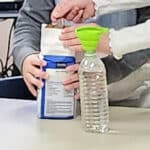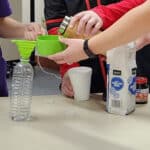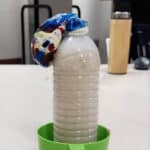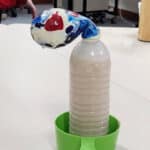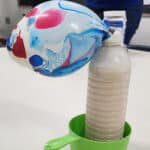Minnesota Agriculture in the Classroom (MAITC)’s Resource Specialists are educators, administrators and ag advocates' personal guide to the many MAITC resources available. They also assist with leading workshops and activities in the classroom. Recently, MAITC Resource Specialist Jessica Petroske had the opportunity to host an educational session for students at the Bluff Creek Elementary STEM Festival.
About the Bluff Creek Elementary STEM Festival
All 200 fourth and fifth grade students from Chanhassen, Minnesota at the Bluff Creek Elementary School had the opportunity to participate in the Bluff Creek Elementary STEM Festival. This festival gives students the opportunity to have their eyes and minds opened to STEM (science, technology, engineering, and mathematics) fields. Students have the opportunity to hear from 14 STEM-based businesses or community organizations and the University of Minnesota. Minnesota Agriculture in the Classroom was happy to be one of the organizations to demonstrate STEM disciplines.
Highlights of the Festival
Three groups of students (ten students per group) attended the Minnesota Agriculture in the Classroom (MAITC) session titled “Farming for Energy”. The main focus of the session was to discuss renewable and nonrenewable energy sources. Students were drawn into the session with the rumor that they would be talking about pig poop! They learned that biomass (such as pig poop) is a great source of renewable energy as well as a resource for other needs.
Biomass Energy Experiment Sessions
At the Minnesota Agriculture in the Classroom’s session, students got to experiment with learning about renewable energy. Students conducted an experiment about biomass energy by using yeast, warm water and sugar in a water bottle (an enclosed space). Gas produced by the yeast was collected in a balloon to demonstrate the volume of gas being produced in the duration of the lesson.
Impact of the Bluff Creek Elementary STEM Festival
All 30 students in attendance during the biomass energy experiment sessions participated in discussions about renewable and nonrenewable energy sources. For many of these students, it was their first time learning about biomass and geothermal energy.

